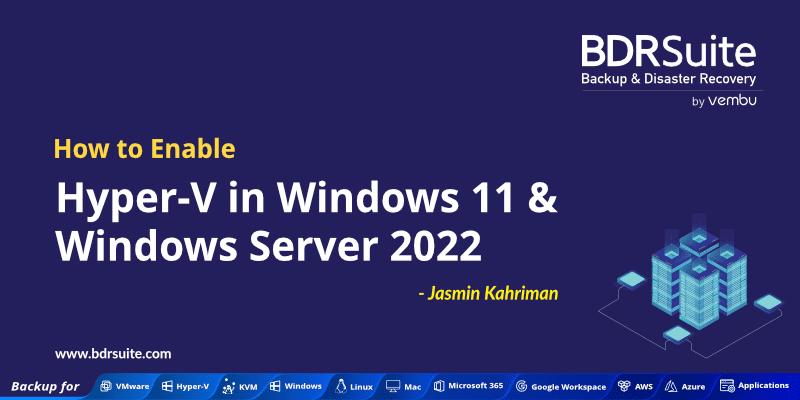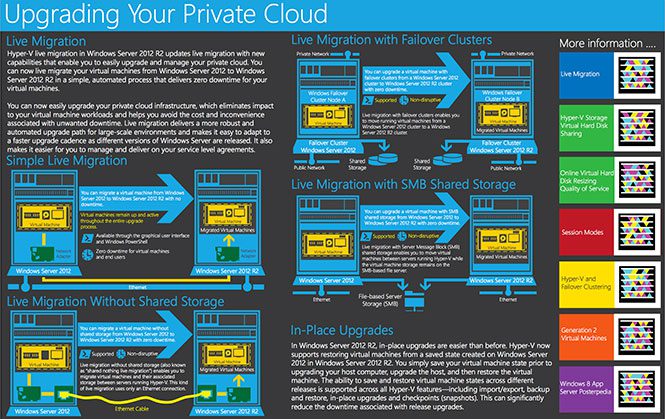Hyper-V Setup on Windows 11: A Guide

Unlock the power of Hyper-V on Windows 11 with our comprehensive guide - transform your computer into a virtual powerhouse!
Table of Contents
Introduction to Hyper-V on Windows 11
Have you ever heard of Hyper-V and wondered what it is all about? Hyper-V is an amazing feature that comes with Windows 11, allowing you to create something called virtual machines. Let's dive into what Hyper-V is and why it's a cool tool to have on your PC!
What is Hyper-V?
Hyper-V is like a magic box on your computer that lets you create virtual machines. But what are virtual machines, you ask? Well, imagine having a pretend computer inside your real computer. That's exactly what a virtual machine is! You can run different operating systems and software on these virtual machines without affecting your actual computer. It's like having multiple computers in one!
Why use Hyper-V?
Using virtual machines with Hyper-V has some awesome benefits. You can test out new software without worrying about messing up your real computer. It's like having a sandbox to play in! Virtual machines also help you keep your work separate. You can have one virtual machine for school stuff and another for games, all on the same computer. How cool is that?
Before You Start
Before you dive into setting up Hyper-V on your Windows 11 PC, it's essential to ensure that your computer meets the necessary system requirements. Windows 11 22H2 requires specific hardware specifications to run the virtual machine platform smoothly. Check that your PC has a compatible processor and enough memory to support virtualization.
Enabling Virtualization
In order for Hyper-V to function correctly on your Windows 11 device, you need to make sure that virtualization is enabled in your computer's BIOS settings. Virtualization allows your system to create and run virtual machines efficiently. To enable virtualization, you may need to access your computer's BIOS during the startup process and locate the virtualization setting to enable it.
Installing Hyper-V on Windows 11
In order to start using Hyper-V on your Windows 11 PC, you'll need to follow a few simple steps to set everything up. Whether you're a beginner or an experienced user, installing Hyper-V can be done smoothly by following these instructions.

Image courtesy of via Google Images
Using Windows Features
The first method to enable Hyper-V on your Windows 11 computer is through the Windows Features dialog in the Control Panel. Here's how you can do it:
1. Press the Windows key on your keyboard and type "Control Panel" in the search bar. Click on the Control Panel app to open it.
2. In the Control Panel window, navigate to "Programs" and then click on "Turn Windows features on or off."
3. A new window will pop up showing a list of Windows features. Scroll down and find "Hyper-V." Check the box next to it and click "OK."
4. Windows will now install the necessary components for Hyper-V. You may need to restart your computer to complete the process.
Using PowerShell
If you prefer using commands, PowerShell provides an alternative way to enable Hyper-V on Windows 11. Here's how you can do it:
1. Right-click on the Start menu and select "Windows PowerShell (Admin)" to open PowerShell with administrative privileges.
2. In the PowerShell window, type the following command and press Enter: Enable-WindowsOptionalFeature -Online -FeatureName Microsoft-Hyper-V -All
3. PowerShell will start installing Hyper-V components on your system. Once completed, restart your computer to finalize the setup.
By following these steps, you can easily install and enable Hyper-V on your Windows 11 PC, allowing you to create and manage virtual machines for various purposes.
Setting Up Your First Virtual Machine
In this section, we will guide you on how to create and set up your first virtual machine on Windows 11 using Hyper-V.
Creating a New Virtual Machine
Once you have Hyper-V enabled on your Windows 11 system, it's time to create your first virtual machine. To do this, open the Hyper-V Manager and click on 'Action' in the menu. Select 'New' and then 'Virtual Machine.' Follow the wizard to set up your virtual machine by giving it a name, choosing the generation (recommended to select Generation 2), and allocating the amount of memory and storage space.
| Step Number | Description |
|---|---|
| 1 | Ensure that your system meets the minimum requirements for Hyper-V setup on Windows 11 |
| 2 | Access the Control Panel and select "Programs" |
| 3 | Select "Turn Windows features on or off" |
| 4 | Tick the box next to "Hyper-V" |
| 5 | Click "OK" and wait for the feature to be installed |
| 6 | Restart your computer to complete the installation process |
Installing an Operating System
After setting up the basic configuration of your virtual machine, you will need to install an operating system on it. Click on your newly created virtual machine in Hyper-V Manager and select 'Connect' to start the VM. From there, you can attach an ISO file or insert a bootable USB drive with your desired operating system.
Managing and Using Virtual Machines
Virtual machines can be a powerful tool once they are set up and running on your Windows 11 system. Here are some tips on how to effectively manage and use virtual machines:

Image courtesy of via Google Images
Starting and Stopping Virtual Machines
When you're ready to use a virtual machine, you can easily start it up by selecting it from the Hyper-V manager and clicking on the "Start" button. This will boot up the virtual machine just like a regular computer. Similarly, when you're done using the virtual machine, you can shut it down by selecting it and clicking on the "Turn Off" button. This will safely shut down the virtual machine and save any changes you've made.
Saving the State of Your Virtual Machine
It's important to save your work on a virtual machine just like you would on a physical computer. Hyper-V allows you to save the state of your virtual machine, which basically means saving everything exactly as it is at that moment. This includes all your open programs, documents, and the current system state. To save the state of your virtual machine, simply select it from the Hyper-V manager and click on the "Save" button. When you're ready to resume your work, you can easily start up the virtual machine from where you left off.
Conclusion
In conclusion, setting up Hyper-V on Windows 11 opens up a world of possibilities for your computer. By creating virtual machines, you can run multiple operating systems on a single device and explore different software without impacting your main system. This powerful tool is a game-changer for developers, IT professionals, and anyone looking to expand their computing environment.
Throughout this guide, we've covered the basics of what Hyper-V is, why it's beneficial, how to check system requirements, install Hyper-V on Windows 11 using different methods, set up your first virtual machine, and manage virtual machines effectively. With these steps, you're well on your way to maximizing the potential of your PC.
Remember, the world of virtualization is vast, and there is always more to learn. Don't hesitate to explore advanced features, experiment with different operating systems, and push the boundaries of what you can achieve with Hyper-V on Windows 11. The possibilities are endless!
Frequently Asked Questions (FAQs)
Can I use Hyper-V on Windows 11 Home?
Unfortunately, Hyper-V is not available on Windows 11 Home. You need to have Windows 11 Pro, Enterprise, or Education editions to use Hyper-V. These versions come with the necessary features to run virtual machines smoothly.
Is it safe to run a virtual machine?
Running a virtual machine and using Hyper-V on Windows 11 is generally safe as long as you follow proper security practices. Make sure to update your virtual machine's operating system and software regularly, just like you would with your main PC. Additionally, be cautious when downloading and installing software on your virtual machine to prevent malware from affecting your system.


